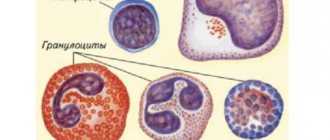The powerful lymph nodes located around the pharynx cannot cope with the attack of the pathogen, so the body begins to produce antibodies that can find pathogenic bacteria, paralyzing their activity.
As a result, streptococci are defeated, but the child’s body produces so many antibodies that, in addition to foreign cells, the body’s own tissues, primarily the heart and joints, begin to suffer. Therefore, it is always better to entrust the treatment of sore throat in a child to a qualified doctor.
In 10% of cases, sore throat in children can be caused by Staphylococcus aureus, rarely pneumococcus, Haemophilus influenzae, chlamydia and fungal flora. Viral pathogens (adenoviruses, herpes virus) more often attack the body of children under 3 years of age.
How and why does infection occur?
Infection occurs by airborne droplets, from a sick person, by using shared utensils and eating contaminated food, as well as by a number of other factors:
- weakened immunity;
- hypothermia or consumption of cold foods and drinks;
- mouth breathing (for chronic adenoiditis, deviated nasal septum);
- irritation of the nasopharyngeal mucosa with a runny nose;
- recent viral diseases;
- inflammatory diseases of the ENT organs (sinusitis, sinusitis, otitis);
- caries and other oral infections.
Secondary tonsillitis in children can occur against the background of scarlet fever, diphtheria, mononucleosis, as well as blood diseases.
In any case, a sore throat develops rapidly, in a matter of hours, and is especially acute in children, accompanied by the main symptoms—a sore throat when swallowing and an increase in body temperature.
Causes of sore throat
Acute tonsillitis occurs due to invasion of the palatine tonsils by pathogenic microorganisms (viruses, bacteria, fungi, or a combination thereof).
Moreover, the infection in young children is more often of viral origin and develops as a result of herpes viruses, adenoviruses, cytomegaloviruses, Epstein-Barr viruses, etc. entering the child’s body. Children over 5 years of age are more susceptible to sore throats of a bacterial nature. The most common bacteria that cause the disease are streptococcus and staphylococcus, or a combination of both. In addition, acute tonsillitis can occur under the influence of pneumococci, spirochetes, and fungi.
The method of transmission of infection is airborne droplets or household contact. A child becomes infected from sick people around him or through contact with toys, dishes and other common items. Normally, a child’s body is able to independently cope with pathogenic microflora; infection occurs only in the presence of factors that reduce the body’s immune forces.
Factors that contribute to the weakening of a child’s immunity:
- hypothermia of the body;
- excessive mental and physical stress;
- unbalanced diet;
- deficiency of microelements necessary for growth and development;
- frequent colds;
- stress.
Sore throat in children: forms and clinical manifestations
Depending on the nature of the change and the degree of damage to the tonsils, several forms of angina are distinguished.
Catarrhal sore throat
A mild form, characterized by enlargement and redness of the tonsils, as well as the absence of purulent lesions. The child feels dry mouth, a whitish coating appears on the tongue, and the cervical lymph nodes are slightly enlarged. In addition to a sore throat that gets worse when swallowing, the child feels a sore and burning sensation. The temperature rises to 38 degrees, children complain of weakness and headache.
Follicular tonsillitis
A serious disease in which the tonsils become covered with purulent pinpoint follicles. On days 2-3, the ulcers open, leaving wounds that heal quickly. There is severe pain in the throat, radiating to the ear, making it difficult to swallow, children refuse to eat and drink. The lymph nodes are enlarged and painful when pressed lightly. Fever and chills are accompanied by a temperature of up to 40 degrees, vomiting, convulsions and fainting are possible.
Lacunar tonsillitis
In the lacunae, between the lobes of the tonsils, islands of yellow purulent plaque appear, which tend to unite into wide purulent foci. The symptoms are similar to those of purulent follicular tonsillitis, but are more pronounced and are accompanied by severe intoxication of the body. It hurts the child to turn his head, his mouth opens with difficulty, which makes speech slurred.
Viral (herpetic) sore throat
Most often, the development of the disease is facilitated by vitamin deficiency and weakened immunity. The tonsils become covered with red blisters, which burst, leaving small ulcers in their place. In addition to a sore throat, symptoms are acute respiratory in nature: cough, runny nose, abdominal pain, indigestion, as well as stomatitis and conjunctivitis. Lack of timely treatment of herpetic sore throat in children can lead to serous meningitis.
Fungal tonsillitis
A relatively mild form of sore throat that occurs in children under 3 years of age. It is distinguished by a coating of white, curdled flakes on the tonsils and, with proper treatment, goes away within a week.
Sore throat is a type of acute inflammation of the tonsils (the same ones that are colloquially called “tonsils”). ... Such increased attention to one single form of tonsillitis is due to the fact that angina is often very severe and gives dangerous complications (including fatal ones!).
Symptoms and treatment of sore throat in children have certain specifics. The course of the disease in older children is accompanied by weakness and drowsiness, while in younger children, on the contrary, one may notice manifestations of anxiety and irritability. Enteroviral tonsillitis in children is accompanied by the appearance of a vesicular rash with liquid inside on the mucous membranes of the tonsils, arches and pharynx. When the blisters burst, ulcers with a white coating appear. There are no scars left after they heal.
Sore throat in children under five years of age is dangerous because a dangerous condition such as false croup can develop. In this case, swelling of the larynx is observed, its lumen narrows, resulting in a clinic of suffocation. If a child has breathing problems, you need to call an ambulance immediately, and before it arrives, ensure access to fresh air in every possible way, for example, take the baby out to the balcony or simply open a window.
For angina, it is necessary to use antiviral drugs (prescribed by a pediatrician).
Treatment of viral sore throat in children should include measures to cleanse toxins.
You should not give your child aspirin or alcohol tinctures. Gargles are usually done if the child is over 4 years old. A young child usually cannot hold his breath and simply drinks the rinse.
Antibiotics for viral tonsillitis are prescribed to children much less often than to adults, that is, only in extreme cases.
Types of sore throat
There are no significant differences in the classification of the disease in children and adults. The disease can be catarrhal, lacunar, follicular, necrotic. The mildest is catarrhal, and the most severe is necrotic.
Catarrhal tonsillitis - superficial damage to the tonsils and moderate signs of intoxication, temperature up to 38 degrees, changes in the blood are minor. When examining the throat, bright hyperemia is detected, covering the back wall of the pharynx, hard and soft palate. The tonsils enlarge mainly due to swelling and infiltration.
Lacunar and follicular tonsillitis. These types of sore throat have similar symptoms and often develop simultaneously: accompanied by a temperature of up to 39-40 degrees, signs of intoxication are clearly expressed
Fibrinous tonsillitis - characterized by the presence of a whitish-yellow fibrinous plaque on the tonsils, regional lymphadenitis is observed. It is necessary to note the following feature of this type of sore throat - it occurs more often in children with severely weakened immunity. This disease can be the result of lacunar tonsillitis or develop independently.
Phlegmonous tonsillitis is a purulent melting of the tonsil area. People between the ages of 15 and 40 are mainly affected. The tonsil is hyperemic, enlarged, and painful on palpation. The throat hurts severely when talking and swallowing, and signs of intoxication are clearly visible. The patient's temperature rises to an alarming level of 39-40 degrees.
Necrotizing tonsillitis. In this case, general and local symptoms are more pronounced than in the forms described above. The patient has a persistent fever, signs of confusion, and constant vomiting. A plaque with a pitted surface is found on the tonsils. Its color can be grayish or greenish-yellow. The affected areas are often saturated with fibrin, that is, they become dense.
How is angina transmitted?
Pathogenic microorganisms live in the tonsils of every person, including absolutely healthy ones, usually without manifesting themselves in any way. But if any provoking factors arise, the pathogenic microflora is activated, as a result of which the tonsils become inflamed and a sore throat develops.
Typically, the peak incidence occurs in the winter and off-season, when people cough and sneeze especially often. This is due to the fact that sore throat is transmitted by airborne droplets.
You can become infected from a person through a kiss or sharing personal hygiene items.
Prevention of sore throat
Prevention of angina is aimed at overall strengthening of the body and eliminating various infections that provoke the disease. It requires an integrated approach:
· Maintaining personal hygiene. During illness, the patient must use a separate towel, toiletries and utensils.
· If you have a sore throat, the patient should be isolated from other family members and people. The room should be cleaned regularly.
· Support proper nutrition. It should be healthy, nutritious, contain vitamins and minerals.
· Regular examination and treatment of helminthiasis, as well as all sources of chronic infection: caries, pyelonephritis, sinusitis, chronic tonsillitis, various purulent skin diseases. Maintain oral hygiene and get examined by a dentist. If necessary, carry out partial or complete removal of adenoids or tonsils.
· Hardening a child from an early age. It is best to start hardening in childhood, but it can be done at any age. Among the methods of hardening are dousing, rubbing, contrast showers, swimming, walking barefoot on stones and sand. The process should be gradual so that the body gets used to the stress. Hardening can only be carried out in a healthy state.
· Increased immunity level. It is necessary to protect the mucous membranes from damage with dry and warm air. Do not frequently use local antiseptics in the form of sprays. Cold drinks and foods can be consumed only in small quantities so that the mucous membranes get used to low temperatures. It is necessary to increase the body's defenses. To do this, you can make an appointment with an immunologist who will prescribe medications that stimulate cellular and humoral immunity, immunomodulators of bacterial origin, and a complex of vitamins.
For this disease, therapy must be comprehensive. Its basis is complete rest in bed rest. Even with proper medical treatment without bed rest, viral tonsillitis can cause complications that will require much more radical and expensive methods of intervention.
As for nutrition, it is better to avoid heavy and sweet foods during illness. Some of them irritate the throat, their digestion requires additional strength from the body, in addition, sugar creates a very comfortable environment for pathogenic bacteria. While the sore throat caused by the virus lasts, it is better to focus on fresh fruits.
Drinking plenty of fluids will help the body cope with the infection much faster. In this case, toxins will be excreted along with urine. While the symptoms characterizing viral tonsillitis are present, it is better to drink warm homemade berry fruit drinks rich in vitamin C. A variety of jelly is also suitable - they soften the throat and soothe pain. During this period, it is better to drink tea with honey and lemon, and you should avoid coffee (it increases nervous activity).
To gargle, you can use decoctions and infusions of various herbs, in particular sage, chamomile, mint, and plantain. A saline solution with iodine is often used. It is advisable to start rinsing on the first day of symptoms.
In some cases, inhalations can lead to a speedy recovery of the patient and eliminate the infection from the body. Raspberry fruits, thyme tincture, eucalyptus oil are very effective for purulent sore throat without fever. You can also use the old grandfather’s method - “breathe over the potatoes.” To do this, bring the washed potatoes to a boil and add a couple of drops of cinnamon oil. Then you should carefully inhale the steam for 15 minutes. Include both your nose and mouth in this process.
Regular gargling can remove the infection from the body as quickly as possible and reduce pain. In this matter, the main thing is to maintain stability.
Antihistamines and anti-inflammatory drugs are prescribed to reduce swelling and soreness in the throat, as well as to alleviate general toxic effects.
Some forms of tonsillitis require surgery, as the patient may suffocate or the infection spreads to other organs. In this case, complete or partial removal of the affected tonsils and pus is performed. The patient is recovering in hospital. After surgery, it is necessary to limit physical activity, protect yourself from hypothermia, and strengthen your immune system and health.
Why is a sore throat dangerous?
As practice shows, only in half of the cases are enlarged tonsils and sore throat caused by purulent sore throat. Many diseases, such as diphtheria or Epstein-Barr virus, have symptoms similar to sore throat. Therefore, only a qualified doctor with modern diagnostic equipment and a well-equipped laboratory can accurately determine the disease and prescribe the necessary treatment.
Each causative agent of sore throat is sensitive to a certain type of antibiotics prescribed by a doctor depending on the diagnosis.
Remember!
Incorrect or untimely treatment of sore throat in children, as well as relying on folk remedies for “red throat” can lead to serious complications and irreversible consequences.
Delay in diagnosis and prolonged treatment provoke the development of rheumatoid arthritis, vascular diseases, heart diseases (including rheumatic endocarditis), renal failure and many chronic diseases leading to disability.
Diagnostics
A consultation with an otorhinolaryngologist begins with collecting the patient’s medical history and complaints. The ENT doctor finds out how long the symptoms of inflammation have been appearing and whether any treatment has already been carried out. Direct examination includes palpation of the neck, parotid and occipital areas. Then the ENT doctor examines the oral cavity and pharynx. If necessary, an endoscopic examination of the pharynx is performed. He assesses the condition of the mucous membranes, palatine tonsils (their size, the presence of plaque on them or purulent plugs in them).
The patient may also be prescribed laboratory tests: a general blood test, a throat smear. If complications are suspected, serological blood tests, X-rays, electrocardiography, etc. are additionally performed.
After suffering a sore throat, a child may be diagnosed with myocarditis, arrhythmia, heart murmurs, pyelonephritis, renal failure, and rheumatism. If an infection from the tonsils enters the bloodstream and spreads throughout the body, sepsis may develop.






